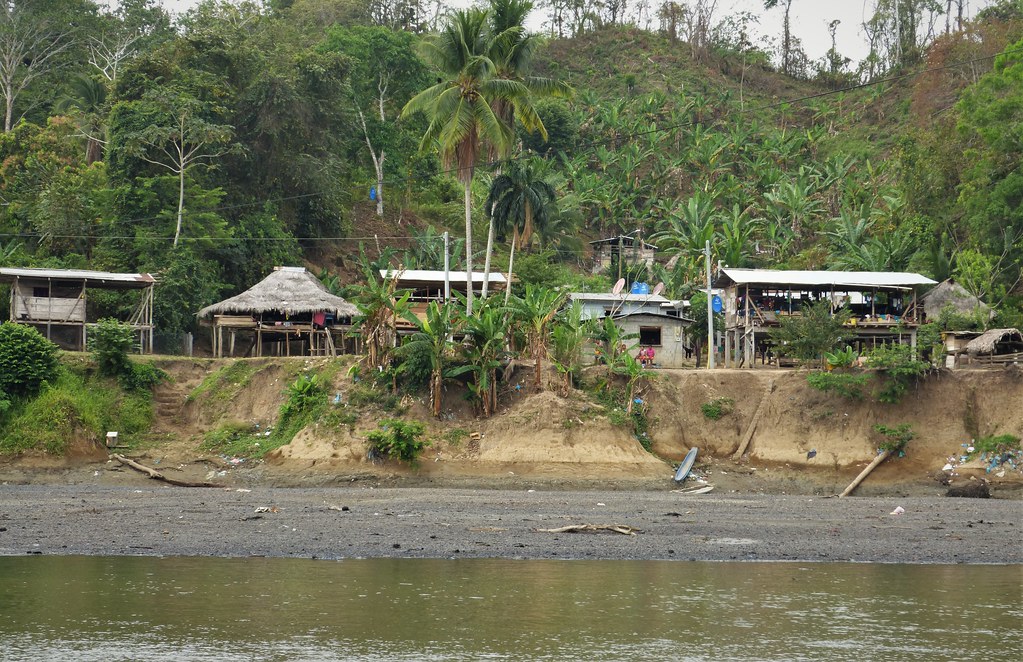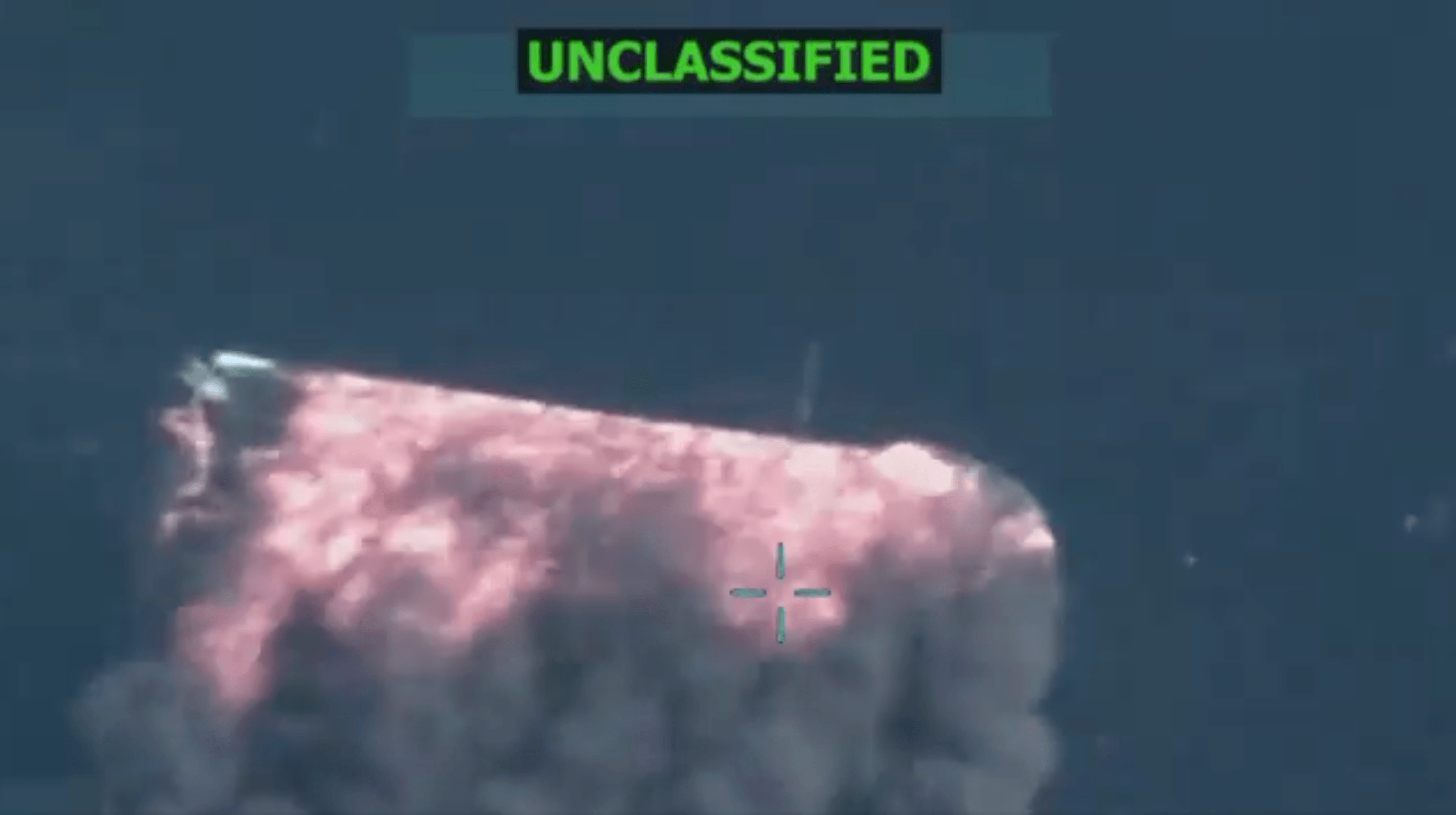A Case Study in the Outsourcing of U.S. Border Control
Over the past year, the Trump administration has put forth an array of measures to deter immigration to the United States, including separating families, enacting a zero-tolerance stance toward irregular crossings, and—most recently—requiring asylum seekers to remain in Mexico while awaiting their asylum claim decisions. Despite these efforts, in February 2019, apprehension numbers from the United States’s southern border hit their highest levels in 10 years.

Published by The Lawfare Institute
in Cooperation With

Over the past year, the Trump administration has put forth an array of measures to deter immigration to the United States, including separating families, enacting a zero-tolerance stance toward irregular crossings, and—most recently—requiring asylum seekers to remain in Mexico while awaiting their asylum claim decisions. Despite these efforts, in February 2019, apprehension numbers from the United States’s southern border hit their highest levels in 10 years. The administration’s ongoing frustration with the ineffectiveness of its domestic migration policies has pushed its focus southward, with President Trump slashing foreign aid for El Salvador, Guatemala and Honduras after accusing the governments of all three countries—and Mexico—of not doing enough to stem migration.
But even further south, the U.S. has another, quieter partner in migration enforcement. Out of the public eye and ire, Panama has ramped up its cooperation with the U.S., detaining migrants headed north and sharing information with U.S. officials. This collaboration specifically targets a small portion of migrants, originating in countries outside of the Western Hemisphere but en route to the U.S. To successfully work with the United States, Panamanian law enforcement officers are trained by their U.S. counterparts, all while receiving new monitoring equipment and technology.
The U.S. has a long history of working with Panama. The nations began cooperating in 1903, during the Panama Canal’s construction, and this bilateral relationship shifted quickly to include partnering on security and defense measures. The U.S. invaded Panama in 1989, leading to an almost entirely peaceful—though nonetheless still controversial—ouster of dictator Manuel Noriega. Although U.S. support to Panama is completely appropriate, the reasons behind the United States’s military-style training for security officials is less obvious. Panama is not in an active conflict and does not suffer from terrorist threats or attacks. It also enjoys one of the lowest homicide rates in the region. However, Panama does have tens of thousands of migrants and dozens of tons of drugs moving through its territory each year—piquing U.S. officials’ interest in the small Central American nation.
The Darien Gap—a jungle that lies within Panama’s southernmost province—has emerged as the primary point of interest. The jungle is almost impenetrable to transit on foot, given the forest’s density, a lack of roads and a dearth of north-to-south rivers to use for navigation. Engineers’ once-ambitious plans for the Western Hemisphere’s Pan-American Highway, which was to stretch from Alaska to Patagonia, remain unfinished only in the Darien. For centuries colonizers, explorers, guerillas and locals alike have entered the jungle, never to be seen or heard from again.
Yet these challenges don’t deter everyone. Each year, tens of thousands of migrants en route to the U.S. attempt to cross the Darien Gap. Estimates on the number of annual transit migrants in Panama range from 20,000 (consistent with public Panamanian apprehension figures) to 34,000 (based on Colombian apprehension figures). These figures are small compared to Venezuelan refugee outflows across South America—where an estimated 3.4 million Venezuelans have fled their country since 2014. But unlike other mass migrations in Latin America, the majority of migrants currently moving through Panama originate in countries outside the Western Hemisphere, such as Eritrea, Nepal, Bangladesh, India, Pakistan and Cameroon. These extracontinental migrants are attempting to arrive in the U.S. for a variety of reasons similar to Latin American migrants, including to reunify with family, to seek asylum or to search for economic opportunities.
Both regional immigration policies and geographic constraints contribute to this particular migration flow. First, extracontinental migrants often enter the Americas through Brazil or Ecuador, which have laxer visa laws. This migrant population then continues north, typically with an intended destination of the U.S. or Canada. Second, the crossing point between Colombia and Panama is almost impossible, meaning that only migrants without other migration options attempt the journey. The extracontinental population—together with migrants from Cuba and Haiti—tend to be the migrants with such limited options to enter the U.S., again given the United States’s strict visa regulations.
Extracontinental migrants represent only a small portion of the individuals arriving to the U.S. In fiscal 2018, only 3.2 percent of migrants apprehended along the U.S.-Mexico southern border originated from the African and Asian continents, barely denting overall U.S. apprehension figures. However, that figure is up from only 2 percent in fiscal 2017 as this population continues to increase every year. The United States’s real interest in this population lies in the security and political challenges posed by extracontinental migrants’ countries of origin. In fact, since at least 2011 the Department of Homeland Security has used a different lexicon for this population, opting instead to use the term “special interest alien” when referring to migrants originating in countries that “promote, produce, or protect terrorist organizations or their members.” Despite these heightened concerns, however, there is no evidence that extracontinental migrants pose any greater threat to U.S. national security.
So while the remote jungle of the Darien Gap may feel far away from the migration debates in Washington, Panama’s border patrol efforts are actually closely linked to U.S. policies. For years, the U.S. has supported Panama’s border enforcement efforts, often as an extension of the United States’s own security and border priorities.
In 2008, Panama announced a modification to its border and jungle security entities to address the irregular flows of people and goods. The government effectively combined several law enforcement agencies into one security entity—known commonly as SENAFRONT, or the Servicio Nacional de Fronteras—that would patrol Panama’s land borders and seas, interdict drugs and weapons trafficking, and counter guerilla violence overflows from Colombia. Increasingly, SENAFRONT’s mandate also includes apprehending and detaining migrants. Since the agency’s restructuring, officers have been posted in almost every community throughout the Darien, often being helicoptered in to their posts or enduring up to 13-hour canoe rides through the jungle’s river system.
U.S. law enforcement and military forces offer training to SENAFRONT officers, including international courses—often held in the United States—but also “marksmanship, basic patrolling, land navigation, communication, medical skills, and engineer tasks” to be conducted in Panama. The United States also increasingly provides funding and equipment. In fiscal 2016, the United States provided Panamanian security forces—including SENAFRONT—with more than US$8 million in funds, an almost 800 percent increase from fiscal 2014 as the countries’ migration and security cooperation increased. These funds went toward radios, boats for maritime patrol, night-vision goggles and dive gear. Most were allocated to security forces operating in the Darien Gap.
In exchange, Panama apprehends migrants and exchanges information on the transit migration population through the United States’s biometric registration system, known as BITMAP. According to the United States’s 2018 Biometric Identification Transnational Migration Alert Program Authorization Act, the BITMAP system was “established to equip international partner-country law enforcement officers to collect and share biometric and biographic data on special interest individuals and to identify potential threat actors transiting through participating countries.” Panama is one of these participating countries—and by July 2017, Panama had already entered more than 20,000 registries into this system.
Overall, Panamanian officials apprehend the vast majority of extracontinental migrants while they travel through the Darien, given the jungle’s natural bottleneck effect. This means that Panamanian border security officials will run every apprehended migrant’s biographic information through international databases weeks, or even months, before migrants complete their transit to the U.S. southern border. They then share that information with U.S. law enforcement authorities. Such moves represent an almost invisible form of border security outsourcing, targeted primarily at the extracontinental migrant population.
On a recent trip to the Darien Gap, I witnessed how Panamanian border security is enforced. Typically migrants are apprehended while moving through the small communities deep within the jungle. They then transit up the river with SENAFRONT officers to be detained in remote and often ill-equipped detention centers. During my visit to one of these centers, the building held 85 migrants that day—half of whom had traveled from Nepal—though the detained migrants were from at least seven other countries as well. As a SENAFRONT officer explained to me, speaking on condition of anonymity, migrants are then transported by bus to a center in Panama City where they are registered into the system, receive medical exams and are provided with an exit visa to continue into Costa Rica. Panama—like most countries throughout Latin America—rarely, if ever, deports extracontinental migrants, primarily given financial constraints. From Costa Rica, migrants will arrive at the U.S. southern border in a matter of weeks (or more likely months), as they still have at least five countries and 2,500 miles left to traverse.
While issues such as a border wall, aid to Northern Triangle countries or shutting down the southern border attract headlines, the United States is also quietly ramping up border control outsourcing. U.S. officials now have the ability to monitor migration flows not only at the United States’s southern border but also at remote jungle outposts 2,500 miles south. These efforts did not begin with the Trump administration—but it is notable that Panamanian authorities continue to collaborate closely with U.S. officials while other Central American countries’ relationships with the U.S. are increasingly strained. At least 14 other countries—including Mexico—are participating in the monitoring of migrant flows through BITMAP, and the system will likely be expanded to other countries as the U.S. continues quietly outsourcing immigration enforcement efforts.





